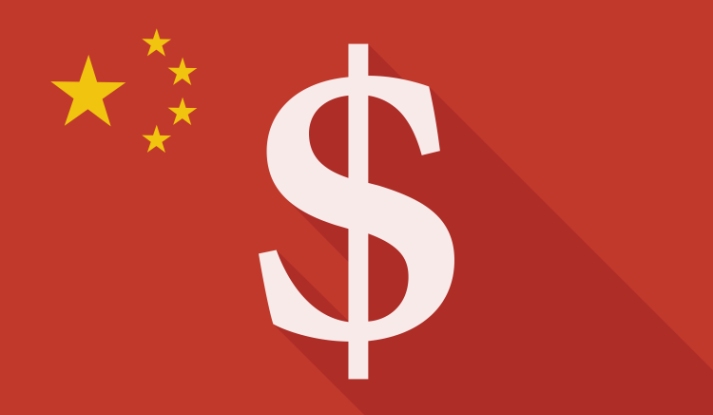
(This article originally appeared onOPEN Forum, a website from American Express OPENthat helps small-business owners find new ideas that can make a difference for their businesses.)
It’s easy to understand why more and more companies are expanding globally, especially into the burgeoning Chinese market with its billions of potential customers, who, according to a recent report by eMarketer, an independent research firm, are expected to generate more than $1 trillion a year in retail e-commerce sales by 2018.
But in order to successfully sell your products in China, you’ll also need to make some adjustments in the way you’re used to doing business, according to Frank Lavin, CEO of Export Now, a company that helps Western businesses crack the Chinese market. Over the past 20 years, Lavin, a former trade official for the U.S. Department of Commerce and Ambassador to Singapore, has helped more than 2,000 companies enter global markets like China.
I spoke with Lavin, who is based in Shanghai and Hong Kong, to ask him what the most common mistakes merchants interested in selling to China make—and his tips for how to avoid them.
Mistake #1: Doing Nothing New
The most common mistake companies make when entering international markets is that they don’t do anything new, says Lavin. “They think that whatever works domestically will also work internationally,” he says. “They don’t look at pricing or brand positioning or the competitive map. There will be gaps and you need to do some analysis to close them.”
That’s where e-commerce sites like Tmall.com, an Alibaba Group website that makes it easy for Chinese customers to purchase goods made by foreign brands, serve as great resources to research your competition when introducing a new product to China, says Lavin. “You can use it as a diagnostic tool to gauge everything from colors to prices against what your competition is offering,” he says.
Mistake #2: Not Embracing E-commerce
Lavin says that while the U.S. has a mature brick-and-mortar merchandizing system that’s been around for two hundred years, Chinese customers primarily shop online. “E-commerce is often the icing on the cake in the U.S.,” says Lavin. “But in China, e-commerce is the cake.”
That means that if your business wants to sell in China, your strategy shouldn’t be to roll out your product in brick-and-mortar stores. Rather, you need to be looking at selling online as your primary means of distribution. Selling online is actually faster and far less expensive compared to traditional retailing anyway, says Lavin, with the added bonus that you can get real-time feedback from your customers. “E-commerce allows you to calibrate and adjust,” says Lavin.
Mistake #3: Failing to Market Differently
Another common mistake companies make is that when they successfully export their product in China, they think their job is done. But Lavin says getting your products there is only the first step. “What we like to say is that distribution ain’t marketing,” he says. “You’ve reached the starting line, not the finish line.”
Lavin says that companies must realize that when they’re entering a new market like China, they are essentially starting over when it comes to building up brand awareness and goodwill among potential customers.
The good news is that if you’ve embraced an e-commerce distribution strategy, you don’t have to invest in expensive campaigns involving billboards or TV commercials. Rather, you’ll need to create strong keyword and social media campaigns as a way to connect with Chinese customers.
Strategies could include reaching out to influential bloggers or opinion leaders who can help raise awarenessof your product, and testing different keywords that will connect with your potential customers. In the case of keywords, it will be important to consider how your potential customers might be using your product. If you want to sell a bottle of wine, as an example, it would be valuable to know whether Chinese customers buy it more frequently for themselves or as a gift. Lavin suggests starting with a campaign that is 75 percent similar to what you might run in the U.S. and then experiment with the other 25 percent.
Mistake #4: Trying to Do It All Yourself
If you’ve made the decision to sell in China, then you should also be willing to partner with other businesses to make that move a success. While there is no one way to do that, the mistake would be thinking that you have to do everything yourself, says Lavin. If your company has a fleet of trucks in the U.S., for example, it likely won’t make sense to try and replicate that in China, where there are numerous companies you could outsource a logistical role to.
You also can begin selling in China without ever even visiting it. Lavin’s Export Now, for instance, can help you set up your e-commerce presence, marketing campaigns and product packaging and shipping. “It’s now possible to run your China e-commerce store from your desk in the U.S.,” he says.
Mistake #5: Obsessing Over Currency Fluctuations
One thing you don’t have to worry too much about when selling in China is the fluctuation of global currencies. Lavin says that if you’re selling less than $3,000 worth of goods a day or less, you can simply make minor price adjustments to your products as needed without worrying about any kind of currency hedge strategy. Then again, if you are selling upwards of $50 million worth of goods a year, you might want to think about putting such a plan in place. “Every company has a different approach,” says Lavin. “But you don’t want to have the solution cost more than the problem.”
Mistake #6: Starting Too Fast
While Lavin says it’s easier than ever to access the Chinese market, you’ll also need a healthy dose of patience and resilience to ensure your expansion efforts pay off. “Things will go wrong and projects often build more slowly at times than they should,” he says.
That’s why Lavin suggests that every company start with what he calls a soft launch, where you begin selling a fraction of the products you might otherwise be doing in the U.S. as a way to work the kinks out of everything from the warehouse and the CRM process to the most effective social media and keyword campaigns. “Before you start turning over the flywheel quickly, turn it over once,” says Lavin. “Then keep ratcheting things up over the next few weeks. If you can do that, that will give you the best chance to make everyone from the company to the customer happy with the results.”




